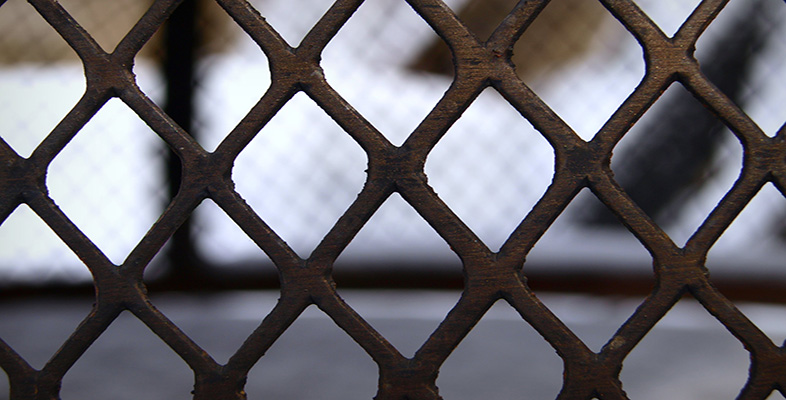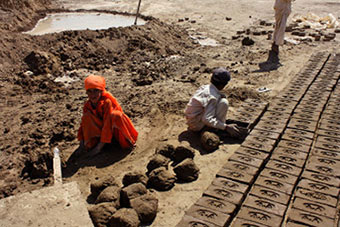4.2 Bonded labour
Bonded labour (also known as debt bondage) is one of the most widely used methods of enslavement. It continues to exist despite being outlawed by the United Nations Supplementary Convention on the Abolition of Slavery, the Slave Trade, and Institutions and Practices Similar to Slavery (1956).
A person becomes a bonded labourer when they are forced to work in order to repay loans. Bonded labourers work long hours every day for little or no payment. They are often forced to carry out heavy-duty tasks, e.g. working in brick kilns.
Bonded labour of adults and children in brick kilns is one of the most prevalent, yet least known, forms of hazardous labour in Afghanistan.
The actual value of work carried out by bonded labourers is often much higher than the debt owed. However, the paradox of bonded labour rests on the fact that bonded labourers rarely receive remuneration for their work (or very little) and they need to borrow money in order to survive. This is the beginning to the cycle of bonded labour, which can be virtually indefinite. Bonded labour can stretch for generations, affecting individuals for their entire lives. This also means that a person can be born into bonded labour, which they have no real chance of escaping.
Activity 8 Child debt bondage in India
Read pages 5–8, and paragraphs 2.3 and 3.1–3.2 of the Anti-Slavery International report, Poverty, Discrimination and Slavery: the Reality of Bonded Labour in India, Nepal and Pakistan [Tip: hold Ctrl and click a link to open it in a new tab. (Hide tip)] (Upadhyaya, 2008).
Consider the following questions.
Question 1
Who are Dalit children and why are they disadvantaged?
Comment
The Dalit children are members of the lowest caste in India. They are often called ‘The Untouchables’. Dalit children are victims of the ancient caste system in India: they are still viewed as outcasts of Indian society and they live in extreme poverty, making them particularly vulnerable to exploitation. Many Dalits are born into debt bondage, which is ‘inherited’ from their parents. Various studies point out that around 90 per cent of bonded labourers are from Dalit, minorities and indigenous communities.
Question 2
What is the legal status of bonded labour in India?
Comment
Bonded labour is officially prohibited in India by the Bonded Labour System (Abolition) Act 1976. However, debt bondage still persists and limited efforts are made by the state to combat this practice.
Question 3
What are the social factors driving bonded labour?
Comment
Caste discrimination is one of the key factors driving bonded labour. It strongly impacts on social mobility and it influences the type of work carried out by members of the caste. There is a social stigma and social exclusion attached to low caste members, especially Dalits. They are perceived as ‘unclean’ and ‘untouchable’. The latter has a practical dimension. Dalits are not permitted to enter ‘high caste’ places of worship, use the same sources of water, or freely associate with the ‘high caste’ on a day-to-day basis; in many cases they cannot touch the food the high caste members eat. If Dalits choose to protest against traditional exploitative, discriminatory and humiliating roles, they face social sanctions and boycotts that further restrict any opportunity to overcome discrimination.
Gender is also an important factor in the context of bonded labour. Women, especially from lower castes, are discriminated against both within households and in employment. For example, many women do not receive remuneration for their work at all. They also find themselves driven into bonded prostitution by their husbands.
Question 4
Which provisions of international human rights law are violated in situations of child bonded labour?
Comment
Child bonded labour violates a number of international human rights instruments, including:
- Article 4 UDHR
- Article 8 ICCPR
- Article 6(1) ICESCR
- in situations of child sexual exploitation: Article 34 and 35 of the CRC (including the Optional Protocol to the CRC on the Sale of Children, Child Prostitution and Child Pornography 2000).

